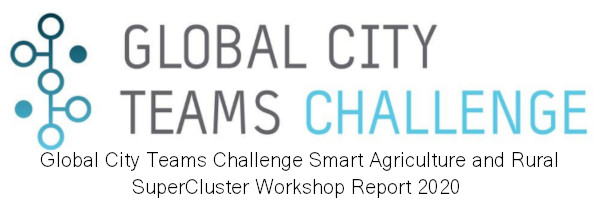Smart Agriculture and Rural SuperCluster Workshop Report 2020
| Report | |
|---|---|
| Image | 
|
| Published | 2020-06-01 |
| Point(s) of Contact | Sokwoo Rhee Jean Rice Josh Seidemann Mo Shakouri |
| Organization(s) | Global City Teams Challenge NIST |
| Where | Washington DC |

| |
The Smart Agriculture and Rural SuperCluster is part of this GCTC effort. On February 19, 2020, this SuperCluster conducted a workshop in Phoenix, Arizona to further refine its blueprint for smart agriculture and rural areas. The workshop ultimately sought to develop a consensus-based smart cities and communities framework and best practices, which could subsequently inform widespread smart agriculture and rural initiatives.
The workshop included five panels, which addressed the following topics: connecting rural places to broadband; smart agriculture; funding and financing; farm field mapping; and improving rural outcomes with broadband access. In each area, experts provided wide-ranging perspectives.
Workshop participants then divided into three groups to discuss challenges for the following areas: smart agriculture, farm field mapping, and improving rural outcomes with broadband access. Spokespersons for each group reported the results to all workshop participants in a plenary session and for possible inclusion in the blueprint and framework.
A month later, the COVID-19 crisis made us even more aware of the criticality of the issues discussed at this meeting, especially broadband connectivity and bandwidth capacity. Closures and stay-at-home directives increased communities' reliance on broadband-enabled platforms. Employers set up remote work protocols, teachers engaged students in video conferencing, and consumers found more ways to shop online with touchless delivery—all for the sake of protecting health and safety.
The COVID-19 pandemic underlined that both rural and urban areas greatly depend on broadband connectivity for distance education, telemedicine, and commerce. This report, along with lessons learned from this pandemic, can inform further pursuit of smart solutions, via broadband connectivity, for agriculture and rural areas.